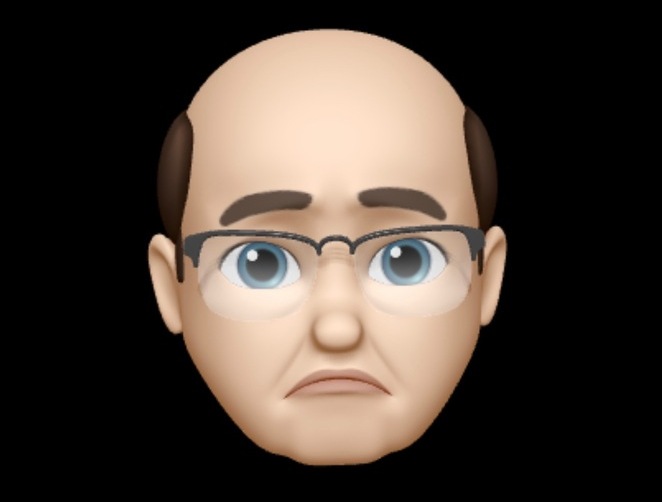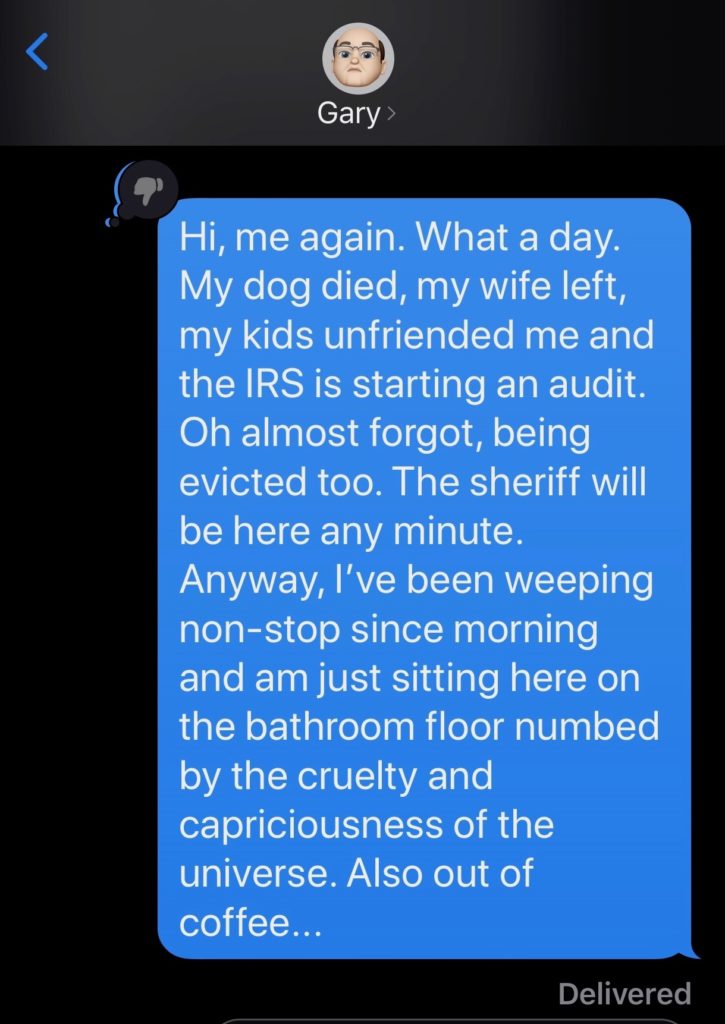
This scenario would certainly never happen to you at work, because you care too much about your long-term care responsibilities to send personal texts while on the clock. But before or after, maybe you’ve had the following experience.
In a quest for sympathy about some unwelcome life experience, you impulsively spill your guts via a lengthy text message to a person you consider a friend. Shortly, the jumpy someone-is-typing dots tell you she’s carefully crafting her response, and you’re all aquiver with anticipation about the incredible support that will soon be coming your way.

And sure enough, the response arrives — an adorable little thumbs-down icon that now sits at the top of your original text message. You know it’s intended to mean she hears what you’re saying and dislikes what you’re going through. How … sweet?
But then you’re suddenly incredulous and aggrieved. “I just spent ten minutes and several hundred thumbstrokes pouring out my wounded soul,” you mentally mutter, “and all you can muster by way of compassion and understanding is a single, half-hearted emoji?”
Besides being unbelievably annoying, the growing use of this lazy trend in text communications makes me weep for the future of real compassion and empathy. When we pour our hearts out, we hope for and expect a commensurate reply, not some sort of cookie-cutter, cartoon reaction.

What if doctors start taking this approach? We describe our symptoms for 20 minutes and they respond with a single “beats me” arms-lifted/shoulder shrug gesture and walk out of the room. Worse yet, they do prayer hands.
Or what if we embrace this technique in interacting with residents? It might be tempting because we’re busy, and they can sometimes take forever trying to tell us what hurts, or why they’re upset today. Answering with a quick thumbs up or down, or by miming a happy, teary or mad face could save a ton of time and emotional energy.
We would never do that, of course. And as evidence mounts that the course of human existence is being altered forever, and not in a good way, by our obsession with digital devices and social media, I’m grateful long-term care continues to offer a safe haven and antidote.
Thankfully, this is a profession that’s rooted in the real, literal world, where good-hearted folks like you choose to make a difference in actual, flesh and blood lives. Difficult conversations happen face to face, not by text. Disagreements are worked out then and there, because there are people to serve. The most important communication that really matters is refreshingly analog.

There’s no shortcut to actual caring. It requires a real investment of time and effort, and that’s something long-term care people will always have to offer. It’s in your DNA, and for that I say:
Things I Think is written by Gary Tetz, a national Silver Medalist and regional Gold and Silver Medal winner in the Association of Business Press Editors (ASBPE) awards program. He’s been amusing, inspiring, informing and sometimes befuddling long-term care readers worldwide since the end of a previous century. He is a multimedia consultant for Consonus Healthcare Services in Portland, OR.




